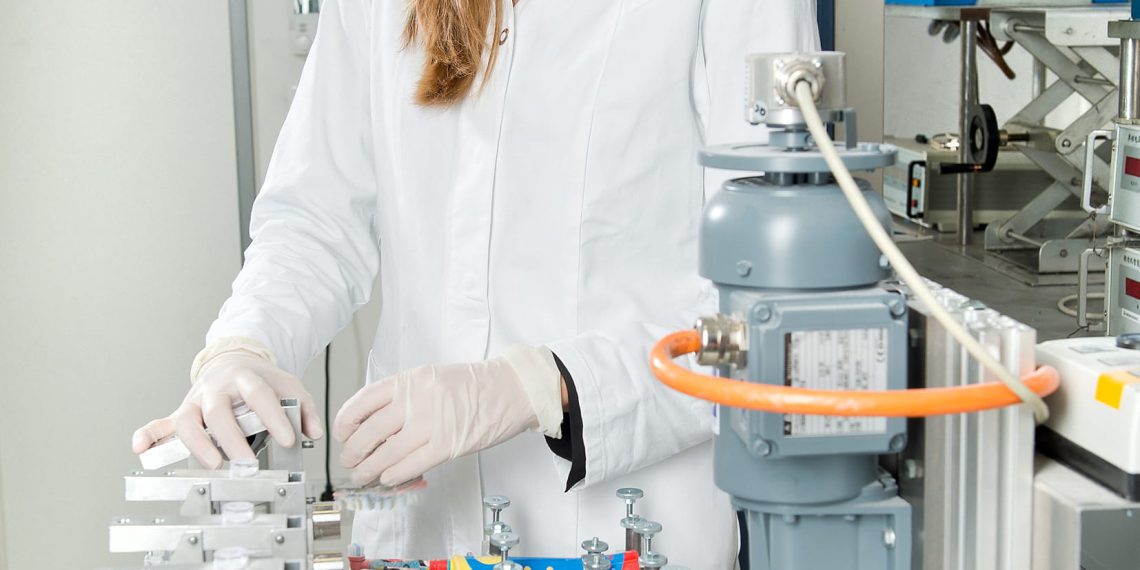In principle, teeth and gums can also be perfectly cared for with a normal toothbrush. However, dentists repeatedly find that most people find it easier to achieve good results with electric assistance, and are therefore increasingly advising electric brushes. TÜV SÜD product expert Andrea Mertl explains what consumers should look out for and how products are tested on the German market.
The figures speak for themselves: three quarters of all dentists in Germany are convinced that correct brushing is easier with an electric toothbrush; one in three even believes they can tell from their patients’ dentition whether they are using an electric brush or not. Today, around 40 percent of all people over the age of 14 in this country already use an electric toothbrush. Since this brushing method has long been taken for granted even by more and more kindergarten children, the market share will continue to grow significantly in the coming years. In addition, many electric fans from the very beginning are switching to new models. Here, it is not only product improvements in terms of program selection or battery charging capacities that are enticing — those who still use a retro model with an electric cord or battery operation should switch for safety or environmental reasons. New features such as a smartphone app that documents cleaning time and quality or recognizes which areas are being neglected via a connection to the camera also encourage new purchases.
Andrea Mertl is responsible for testing electric toothbrushes at TÜV SÜD: “Many manufacturers advertise that their products provide good brushing performance. With our tests, we check this on the basis of various aspects and ensure that the electric toothbrushes also clean gently, are user-friendly to use and comply with the specifications regarding safety and environmental protection.”
Innovative toothbrushing robot
An extensive test scenario has been defined for these reviews. A specially developed brushing robot has already been in use since 2017, simulating brushing performance on black-colored artificial dentures. A white paste represents plaque and impurities to be removed from the tested models. How well this is achieved is analyzed by software, which assigns scores for the criteria of interdental spaces, tooth necks, smooth surfaces and overall surface area during its evaluation. After these automated tests and, of course, a thorough safety check in which, for example, the cord and charging station are also closely examined, human test subjects of all ages come into play. They test several products from different manufacturers with different product features and from different price ranges. Only after this elaborate procedure does the company award its test seal.
Rotary model or sonic toothbrush
Basically, electric toothbrushes are based on two different technologies. Rotary models and sonic toothbrushes are still on the market, and within these groups there are of course differences in terms of functionality. Very good results can be achieved with both variants: Rotary brushes have a small, rotating round brush head that works on each tooth individually. The brushes brush with an alternating left-right movement — a semi-circular rotation of the brush head.
Sonic toothbrushes usually have larger, oval brush heads and clean a larger area at once. Nevertheless, the brushes do not clean with sound, but with vibrations that occur at a very high frequency. Meanwhile, the integrated transducers generate sound waves between 250 and 300 hertz that drive the brush head. This creates a buzzing sound, which originally gave this type of toothbrush its name. Since less pressure is required with this system, gentle cleaning is even easier and interdental spaces are also better reached, more and more users are giving preference to sonic brushes.
Special form of sonic brush: ultrasonic toothbrushes
Still relatively new on the market are ultrasonic toothbrushes, which use a special toothpaste and send tiny microbubbles into the deepest crevices of the teeth at up to 96 million vibrations per minute to loosen plaque and bacteria. While the results achieved are excellent, optimal cleaning takes significantly longer than with other systems. Moreover, at the moment this technology is still exclusively represented in the upper price segment and is mainly recommended for people with gum problems, braces or bridges.
“Whether a toothbrush with smartphone connectivity is really necessary is up to each buyer to decide. However, our experience shows that electric toothbrushes generally make good oral hygiene much easier. In any case, we advise to go for tested safety and to pay attention to the corresponding labeling when buying.”
- Andrea Mertl

















